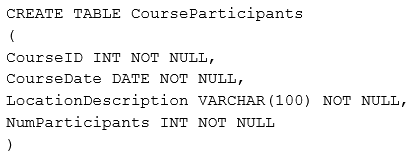

You run the following Transact-SQL statement:
You use the table to store data about training courses: when they finished the location, and the number of participants in the courses.
You need to display a result set that shows aggregates for all possible combinations of the number of participants.
Which Transact-SQL statement should you run?
lh2607
4 years, 6 months ago